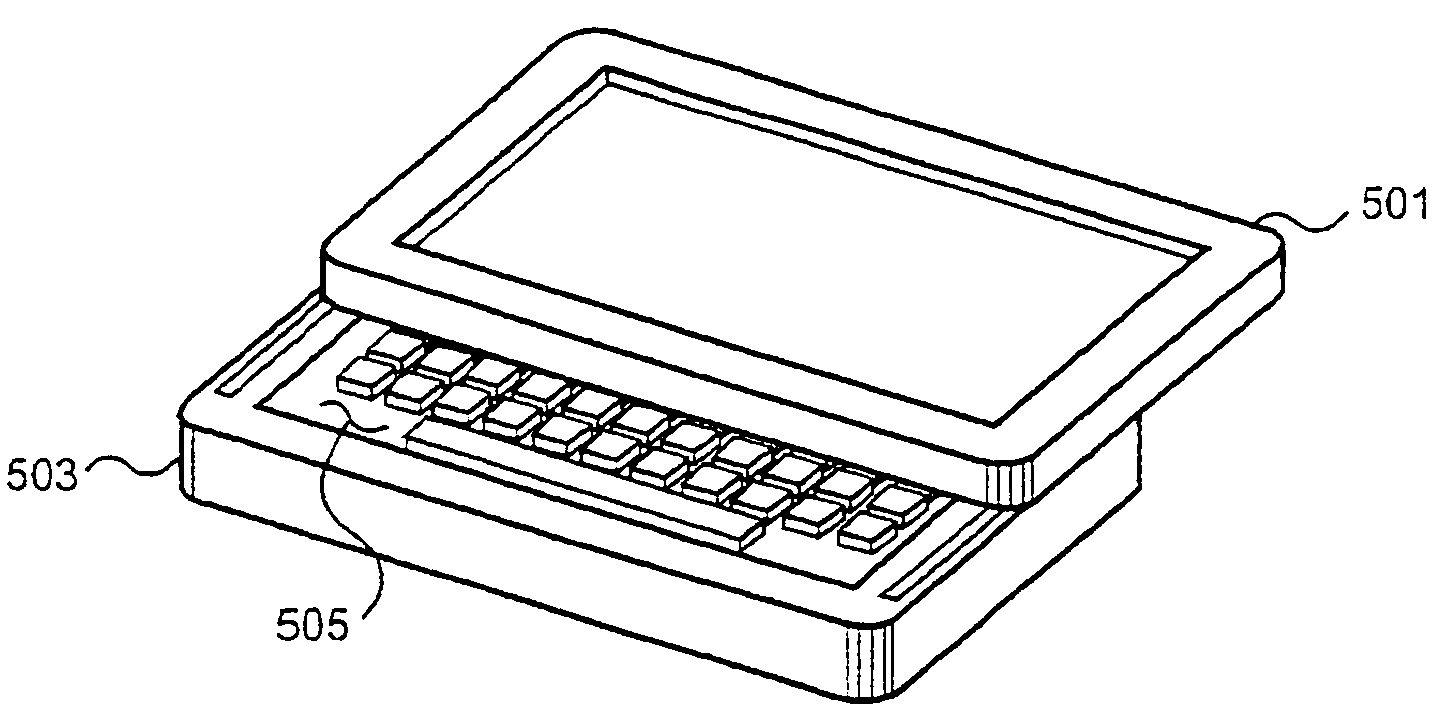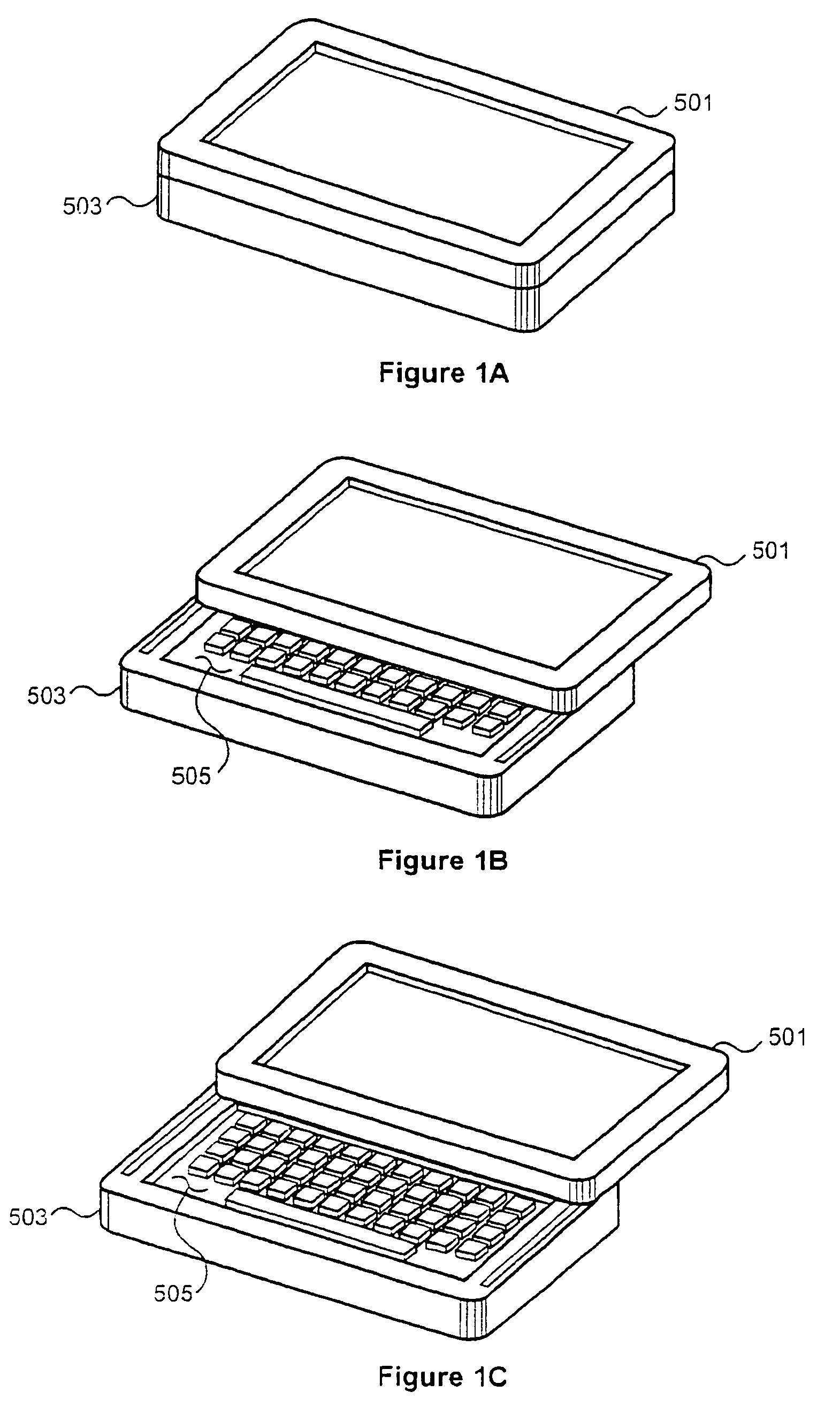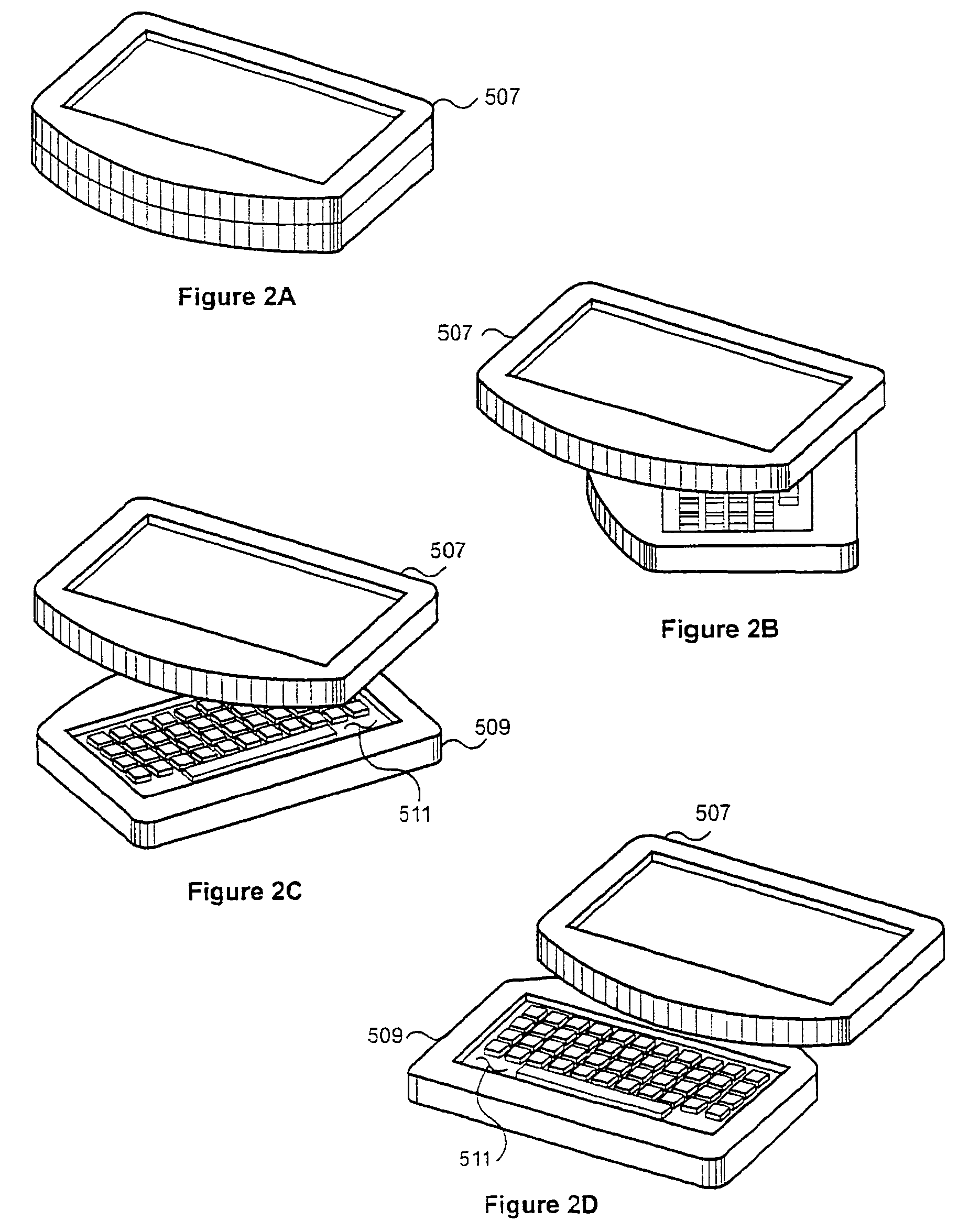Communication by textual means, such as e-mail, has been performed almost exclusively over land-based
copper and
fiber optic phone lines, because the wireless communication networks have simply not had the capacity or capability to provide cost effective,
wireless transmission of textual data.
Many hand-held, wireless devices are beginning to provide access to e-mail, but their functionality is currently very limited.
The user is usually limited to browsing, that is receiving and reviewing the information, not authoring and sending data.
Users are hesitant or reluctant to enter a message if the
data entry process is slow and difficult.
This is a problem that conventional devices cannot properly address due to
user interface limitations, i.e., the capabilities, design, and
layout of the physical devices.
However, IM and other types of instantaneous textual and graphical communication are more real-time and intrusive than e-mail; the same way that an incoming phone call is more real-time and intrusive than checking voice messages.
There are a variety of devices available that are capable of providing wireless access to
textual information, such as mobile phones, personal digital assistants (PDA's), hand-held computers, and two-way pagers, but the compromises in all of these designs limit their suitability as IM devices.
For some of these devices, the displays are always visible and easy to see, but the device lacks an
input device, has a small and inappropriate
input device, has a slow and error prone method of
data entry, or requires additional
peripheral devices and a work surface for support.
For other devices, a suitable
input device is present, but the device transforms between multiple states which prevent the display from being seen in one of the states, limiting the convenience of using the device on a frequent basis.
The
mobile phone configuration has the following disadvantages: (1) the display is typically very small and inappropriate for display of large amounts of textual data, i.e., they are typically proportioned for one or two rows of phone numbers and proper names, not textual data in the structure of a written
sentence; (2) the keypad is commonly located adjacent to the display, increasing the overall size of the unit; (3) on some units, the device has a
clamshell design that obscures both the keypad and display when closed; (4) the keypad is typically a twelve-digit keypad designed for
numeric data entry, although the keyboard usually supports
alphanumeric character entry for the purpose of entering proper names into an
address book maintained in the phone's memory, whereby the commonly used method of accessing
alphanumeric characters is to switch the device into a
text entry mode, then press a key repeatedly to access a particular one of a subset of characters available for each key, this method being extremely slow, awkward, error prone, and not appropriate for a device intended to transfer textual data on a regular basis; and (5) the communication module is typically engineered to support
voice communication, and in only the latest device versions, limited retrieval of alphanumeric data.
The PDA configuration has the following disadvantages: (1) the device has no keyboard, so alphanumeric
data entry is usually performed in one of two ways: (a) the user taps with a hand-held
stylus on a “soft” keyboard that is drawn on the display, or (b) the user writes on screen with a hand-held
stylus and the processor converts the user's writing into text data; (2) an optional detachable keyboard may be available, but the keyboard usually requires a flat surface for support during use as it is tethered to the device by a cable or attaches in such a way that it will easily become detached if tilted, thus making the keyboard extremely awkward for use in one hand while on the move; and (5) the device lacks a communication module, although modules may sometimes be added, but at the expense of consuming the port available for connecting the optional keyboard to.
The palmtop configuration has the following disadvantages: (1) although the
clamshell design affords protection to the display and keyboard when the device is closed, the
clamshell design often renders the display non-visible when the device is closed, and is not adequate for frequent presentation of information to a user on the move; and (2) the relatively
large size makes the device prohibitive for use as an IM device, because when a large display and keyboard are present, the device becomes inconvenient for the user to carry on a regular basis, resulting in the
usability of the display and keyboard being greatly reduced.
The two-way
pager configuration has the following disadvantages: (1) units with a flat
layout have displays that are always visible, but to keep the overall device size down, the display and keyboard are reduced to minuscule dimensions which greatly reduces their
usability; and (2) units with a clamshell design, render the display non-visible when the unit is closed, adding inconvenience when the user must look at the display.
The devices are either: (1) designed primarily for
voice communication and have limited alphanumeric entry capability, or a capability that is not suited to use in your hands while on the move; or (2) designed primarily for occasional retrieval and display of
textual information and have a design that is very inconvenient for frequent input and viewing of data while on the move.
signs. As such, they are not good choices for IM and other types of instantaneous textual and graphical communi
 Login to View More
Login to View More  Login to View More
Login to View More 


